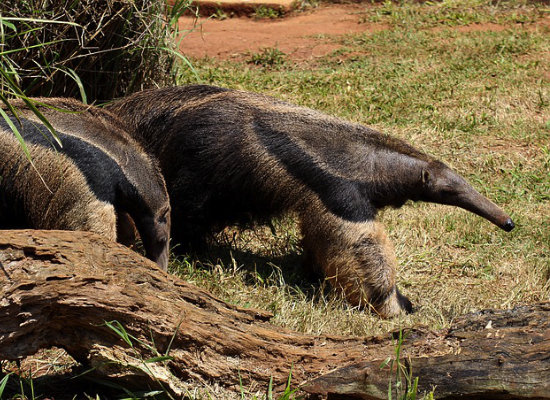Anteater
Myrmecophaga tridactyla

The giant anteater lives in Central and South America. Some adults are more than two metres long. They live in grasslands and forests and feed entirely on termites and ants. An anteater gets into the nests of insects by cutting into them with powerful, large claws on its front legs. Once the insects are exposed the anteater eats them by protruding its exceptionally long, sticky tongue which can reach lengths of 60 cm (24 in).. Trapping of insects is helped by thick mucus secreted by large salivary glands. The mouth is very small and very little jaw movement is possible. To open its mouth the anteater has to rotate the two halves of the lower jaw. It can flick its tongue in and out 160 of the small opening 160 times a minute.
The ants and termites are crushed against the palate and are swallowed with small amounts of sand and soil. Once in the stomach the food is ground up by strong folds in the stomach wall aided by the sand and soil and by the formic acid released from its prey by the grinding process.
Virtual Anteater
What to look out for
EASY
The skull is long and tubular – why do you think this is?
MILD
Separate the upper and lower jaws. How many teeth can you see? Why do you think this is?
TOUGH
Look at the front of the skull and note the form of the lower jaws. Why do you think they are so delicate?